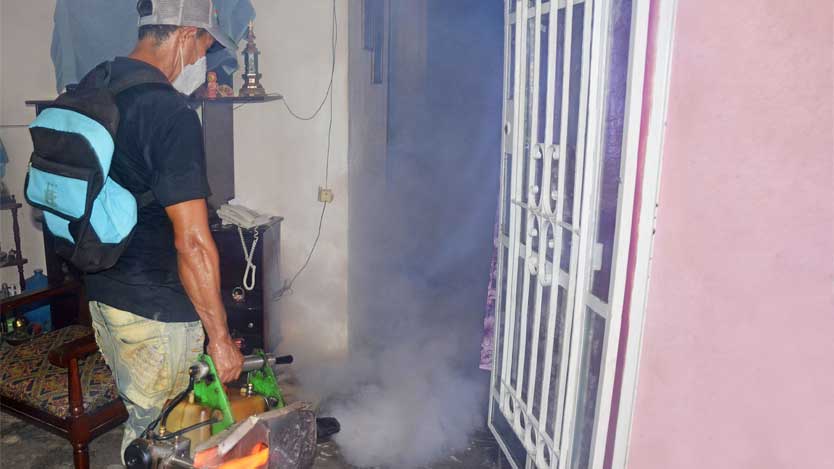
At the close of statistical week 39, Ciego de Ávila is experiencing a paradox: the incidence of COVID-19 decreases and the dengue fever increases. Have diseases agreed to "manifest themselves" and keep us out of breath? Not quite.
Looked at properly, it is not a paradox, but the result of several factors, including the impact of the anti-COVID vaccination and a better investigation of nonspecific febrile syndromes that point to dengue. In reality, the disease was always there, but the pandemic peak of the new coronavirus monopolized the efforts and even the infrastructure of the province. Hence, after closing isolation centers, they have to be reopened, now to isolate 100 percent of suspected people, as mandated by health protocols for arboviruses.
To date, little more than 200 suspected cases of dengue have been recorded, of which less than 100 have been confirmed, for which Ciego de Ávila has a cumulative incidence rate of 20.8 per 100,000 inhabitants.
Domingo Molina Hernández, head of the Arbovirus Program at the Provincial Center for Hygiene, Epidemiology and Microbiology, explained that since it cannot be verified that dengue patients remain isolated and under the mosquito net inside their homes, the current moment requires that they enter and on the sixth day, carry out the determination of IgM, also known as monoserum.
“Together with the opening of isolation centers in the most complex territories, it is necessary to reinforce surveillance and active research from Primary Health Care. We always insist that this battle is won with intersectorality, with a diversity of factors that intervene in the detection of cases and in controlling the focus".
The specialist said that “in the last week there has been a growth in the incidence rate of suspected cases, especially in Majagua, Morón and Ciego de Ávila, which is consistent with the increase in the infestation of the Aedes aegypti mosquito in those municipalities and in others such as Baraguá and Bolivia”.
Contradictorily, the number of admissions did not grow in the same proportion, only 53 percent of the reported febrile syndromes were admitted, which could be explained by the lack of beds in hospitals and isolation centers, but also by complacency and not paying attention when detecting a person with fever, headache, and even the rash that appears on the fourth day.
However, from an average of 21 febriles detected daily 15 days ago, the province went from week 39 (closing on Thursday, September 30) to 32, mainly as a result of increased epidemiological surveillance. In general, and according to Molina Hernández, Ciego de Ávila shows better indicators than in the same stage of the previous year, but that is not consolation or anything like it.
Above all, because the vector infestation advances in all the Health areas of the most affected territories and in none of them is the daily plan of inspected homes fulfilled. If last April this newspaper put the alarm note for an infestation index of 0.20 (always remember that the maximum "healthy" is 0.05), write that at the end of September it was 0.49 carries exclamation marks. Let's add the 0.71 of the Breteau index, which refers to the number of containers with Aedes aegypti outbreaks among the number of inspected houses.
Even though more than 1,200 fines have been imposed so far this year, according to the Second Section on Communal Hygiene of Decree Law 272 of 2001, those who have breached the duty to keep their homes or entities free of the vector, to Expert judgment the sustainability of vector control (and therefore of the disease) depends on the self-responsibility of citizens because the mosquito has domestic habits.
The Aedes aegypti is in rise, it is confirmed by the 335 detected foci, of which 34 had adult insects and the rest larvae and / or pupae. I mean, the auto-focal? Well, thank you. Let's not forget that to find adult mosquitoes and pupae, between five and seven days had to pass without scrubbing the tank or covering it, without checking the backyards, without throwing the water into the Haier refrigerator. It will end up being true that we only remember the Aedes when we do not have electricity.
